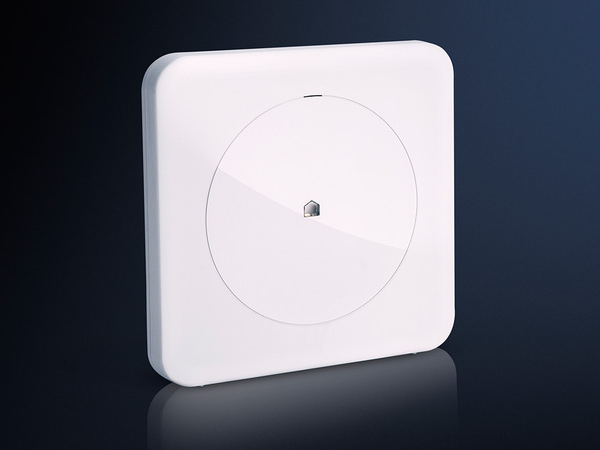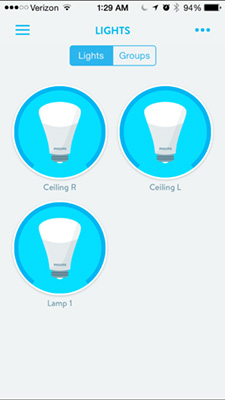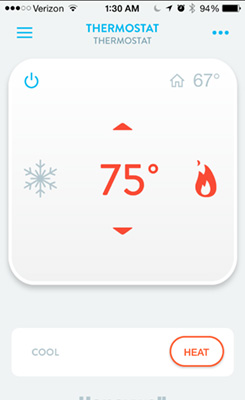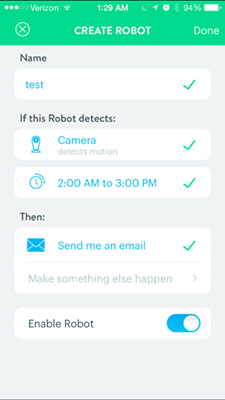Quirky Wink Hub Review - Tom's Guide
Our Verdict
The Quirky Wink Hub makes it easy to connect a agglomeration of smart abode devices and doesn't require a monthly fee, but it doesn't give yous a lot of control.
For
- Super-simple installation and configuration process
- Intuitive app
- Logic and shortcut features gratuitous to use
- Wide assortment of supported devices
Against
- Pairing process for devices can be fussy
- Wink app doesn't always let you access devices' full features
- Wink logic lacks complexity
Tom's Guide Verdict
The Quirky Wink Hub makes it like shooting fish in a barrel to connect a bunch of smart domicile devices and doesn't require a monthly fee, but it doesn't give you a lot of control.
Pros
- +
Super-simple installation and configuration process
- +
Intuitive app
- +
Logic and shortcut features free to apply
- +
Broad assortment of supported devices
Cons
- -
Pairing procedure for devices tin can be fussy
- -
Wink app doesn't always allow you access devices' full features
- -
Wink logic lacks complexity
Simple. Like shooting fish in a barrel. That's the premise of the Quirky Wink, a system that will let you connect a number of smart home devices -- from thermostats to air conditioners to garage doors -- and command them via a single app on your smartphone. And, with the addition of the $89 Wink Hub, you can control an even greater number of devices. The hub isn't a bad (or costly) investment if yous're trying to centralize your home'south devices around the Wink platform (particularly since Wink itself is free). However, you're getting what you pay for — an feel that'south probably good enough for about, simply certainly non great.
How It Works
As the center of Quirky's smart home platform, the Wink Hub acts as a span to connect other Flash-friendly devices -- from thermostats to calorie-free shades -- wirelessly to the Internet, where you tin can then control them using your smartphone.
The Hub itself supports a variety of protocols for connecting to supported devices (ZigBee, Z-Wave Plus, Bluetooth LE and Wi-Fi, etc.). At the time of this review, at that place were a pretty good number of Wink-branded products bachelor for auction directly from the Wink website— 45 in all, not counting whatever prepackaged kits one can purchase.
I like the diversity: a touch on-screen controller, enough of lights, a variety of switches and outlets, sensors (including a water sensor), alarms, smart locks, thermostats and even full-fledged appliances (a Quirky air conditioner, anyone?). Other devices that work with Z-Wave and the other platforms the Wink Hub supports can possibly link upwardly for basic functionality.
More than: Best Smart Abode Gadgets
There are a number of Wink-compatible devices, such every bit Dropcam and the Nest Learning Thermostat, which tin can connect to the Internet (and Wink's app) without having to go through the Hub first. Depending on which smart home products you wish to use, you may non demand the Hub at all. Dwelling Depot, which is also selling the Quirky platform, divides Wink-compatible devices into those that require the hub, and those that don't. (There are currently 27 products in the former category, and 33 in the latter).
Pattern and Setup
The Quirky Flash Hub is a white 7.25-inch square box that's near 2 inches deep at its fattest bespeak — the Hub'south footstand. All you have to do with the Hub is plug in its single power cable —no Ethernet required.

Setting up the Hub (and, really, doing anything with the Wink platform) is all accomplished via the accompanying smartphone app. The Wink app does a pretty skillful task of holding your paw through the brief initialization process for adding the Hub to your overall Wink setup, though it definitely could take been easier.
I disliked that I had to manually enter my Wi-Fi network's proper name during the setup process. It's an unnecessary step that's solved on most other products with a drop-down menu of every network that's bachelor. Additionally, the Hub doesn't allow you lot to connect to whatsoever hidden networks, nor can you connect to any 5-GHz networks.
Adding a Device to Your Smart Home Network
I similar the fact that the Quirky Wink Hub supports a ton of unlike protocols: Bluetooth LE, Wi-Fi, ZigBee, Z-Wave, Lutron ClearConnect and Kidde. That said, of the 4 test products I picked upwards to utilize with the Quirky Wink Hub, virtually connected to the free Wink app (bachelor for Android and iOS) without any need for the hub.
I tested the Wink with the Honeywell Smart Wi-Fi Thermostat ($239), the Philips Hue Lights ($200), a Leviton in-wall dimmer switch ($60) and a Dropcam ($200). Of these, only the switch needed to be really connected to the Hub earlier information technology would exist recognized by the Wink app.

You tin also add not-Wink-certified devices to the hub, such as a Z-Wave siren and strobe light, simply the option to exercise so — Z-Moving ridge's inclusion fashion — is buried pretty deeply within the Flash app.

Adding new products within the Flash app is typically a painless affair. When you tap on the giant "Add a production" selection on the app's left-manus sidebar, you're given a fairly helpful list of item categories and potential manufacturers from which to cull. If you can't find your specific device, you lot can likewise scan the barcode from its box to see if the Wink app can make a friction match.
Annoyingly, a number of connected-home devices require that you download their ain app and create an account before you lot can link them to the Wink app. In the case of the Philips Hue bulbs, I also had to connect the hub that comes with the lights to my router. Its approach is a scrap clunkier than the all-in-one setup provided by something similar Lowe'southward Iris smart abode platform, but it is gratuitous.
I ended up linking almost all of the devices to Wink by pairing the accounts I created with the devices' manufacturers to Wink. The process couldn't have been easier, save for one instance where I had some trouble getting the Honeywell Smart Wi-Fi Thermostat to work. Every bit it turns out, said thermostat was updating its own software and wouldn't respond to any Wink-based commands until information technology was washed.
There is no way to change the Wink Hub's Wi-Fi settings without resetting it back to a factory default setup, and I had some issues getting the Hub prepare over again when I attempted to do so. I managed to get information technology working on the fourth try, which wasn't very confidence-boosting.
Interface
The Wink app is extraordinarily easy to use compared to other smart home systems — Lowe'south Iris comes to mind. Nevertheless, there's one major drawback for this ease of use: The app feels too elementary in regards to the kinds of things yous can do with your connected devices.

Take, for instance, the Leviton in-wall dimmer switch. Equally its name implies, it's capable of taking one's lights up and down in a dainty, gradual fade. Using the Flash app, however, you only get the option to flip the light on or off.
The Philips' Hue lights responded more than rapidly to commands from the Wink app than from Philips' app, only here again, controls were limited. You can flip the lights on and off, equally well equally control their brightness and color, simply you tin't necktie the lights to whatsoever kind of shortcut. For example, you can't have a "Dwelling" shortcut that turns them to a colour, flips on your television, and sets your thermostat to a particular temperature. You also can't program the lights to work with any of Wink'southward logic — if something trips a motility sensor (or a camera), yous can't have your Hue lights flip on (or start making red and blue police patterns).

The Wink-based controls for a Honeywell Smart Wi-Fi Thermostat were also about as simple as it gets. You lot tin can turn the temperature upwards and down and y'all can plow the thermostat on and off. That'due south information technology. You lot tin't tap into basic scheduling controls, nor can you lot set a timer for when you lot'd like the thermostat to go on or off — both of which would exist immensely helpful if you lot desire your house to be common cold or hot at a sure bespeak of the day (and both features you can find within Honeywell's own app).
The Flash interface for the Dropcam was worse than what you'd get from the Dropcam website. I mainly didn't similar the fact that I couldn't become a alive feed of the cam itself (which does absolutely no good if yous're trying to check in on something at habitation). I likewise couldn't use Flash to communicate using the camera'southward built-in speaker, nor listen in on anything happening around the camera.
I did like the Flash app's shortcut feature, which allows you to toggle specific actions just by hitting buttons within the Flash app. In my case, I could flip a calorie-free switch on, turn the camera on or off, and prepare the thermostat to a heating or cooling mode (or ready the temperature range the thermostat should heat or cool to). However, the shortcuts didn't piece of work at all with the Hue lights, which was a bummer.
Automated Actions
Wink's "robots" feature, or its logic, is extremely easy to apply, but it lacks the complexity of competing smart habitation systems. You can gear up upwardly a "robot" to take detail deportment if something happens during a certain time. For example, if your camera detects movement during a sure time, it tin can send you a notification or email — or both, while information technology besides flips on a light switch.

Robots aren't universal, withal. With the products I tested, the only logic that I could use to start an action ended upwardly being my location or some kind of move (or sound) my Dropcam detected. You tin practise more than if y'all accept other devices — similar the Quirky+GE Tripper Window/Door Sensor ($twoscore), which tin can do things like flip on your (non-Hue) lights when you open or shut your front door (or a window).
I was hoping for a flake more customizability with these automations. Flash, and the devices you pair with it, cover the basics decently plenty. More avant-garde users who want finer command over how their smart devices collaborate will feel stymied.
Though Wink'southward logic feels a bit anemic, it does residue this out past offering a setup process that even a kid could figure out. And, as a bonus, it doesn't cost yous anything to set up or use this logic across all of your devices. You lot don't get whatsoever logic capabilities in Lowe's Iris, for example, unless yous pony up $x a month.
My final gripe with the Wink's logic setup — and actually, the Wink equally a whole — is that it takes a while for activities to register. Frequently, I'd get a notification most motion noticed on the Dropcam minutes after information technology happened. That doesn't sound like a lot of fourth dimension, merely it does affect one's ability to respond in real-time to events at home. The telephone app was pretty good most notifying me that I had arrived home via its built-in geolocation features, but the necktie-ins to other devices felt overly sluggish sometimes. Even flicking the Leviton light switch on and off via the app was a lot more laggy than, say, turning the Hue lights' colors to a different shade.
Wink vs. the Competition
Do-it-yourself smart home systems -- a series of devices connected to the Internet and controlled by your smartphone -- are still in their infancy, so companies are trying to figure out what will resonate with consumers. Some, such equally Lowe's Iris, have opted for prepackaged kits that include a hub likewise as a few devices (such as cameras or a thermostat). To these kits, yous can add devices subsequently, if you so choose.
Quirky'southward Flash goes for an a la bill of fare approach, letting you lot decide from the outset which devices you want to add to your smart home network. Those unfamiliar with smart home systems may find Lowe's approach easier to follow, merely there'southward greater flexibility from the outset with the Wink organisation.
Unlike Lowe's Iris platform, which requires a $10 monthly subscription to admission all its features, Flash doesn't have whatever recurring fees. However, if you lot add together a device such equally Dropcam, it has its ain carve up charges for storing video.
Lesser line
Do you need a Flash Hub? Not necessarily; non unless you're picking up hardware that requires you to use i in order to integrate it into your Wink-powered smart home. On Flash, as a whole, I'thousand torn. It's completely free for yous to use, which gives it an automatic boost over competing smart domicile systems that accuse you lot a monthly fee. Information technology'due south too a much more open system that can work with many more than devices. However, the Flash app doesn't requite you every bit much command over individual smart home components as your would get through their own apps.
Still, Wink is an easy way for people to dip their toes into smart dwelling systems without feeling overwhelmed past something that'south just too complex or costly. A number of private, Flash-compatible products are skillful enough to stand on their ain. There'south no reason to not requite Wink a attempt, at least, to tie them all together — and if yous like the experience, requite the Hub and its Hub-required devices a shot.
- The Hottest TVs of the Year
- A Guide to Cutting the String
- Our Favorite Soundbar Speakers
Source: https://www.tomsguide.com/us/quirky-wink-hub,review-2607.html
Posted by: pedrozaandoing.blogspot.com


0 Response to "Quirky Wink Hub Review - Tom's Guide"
Post a Comment